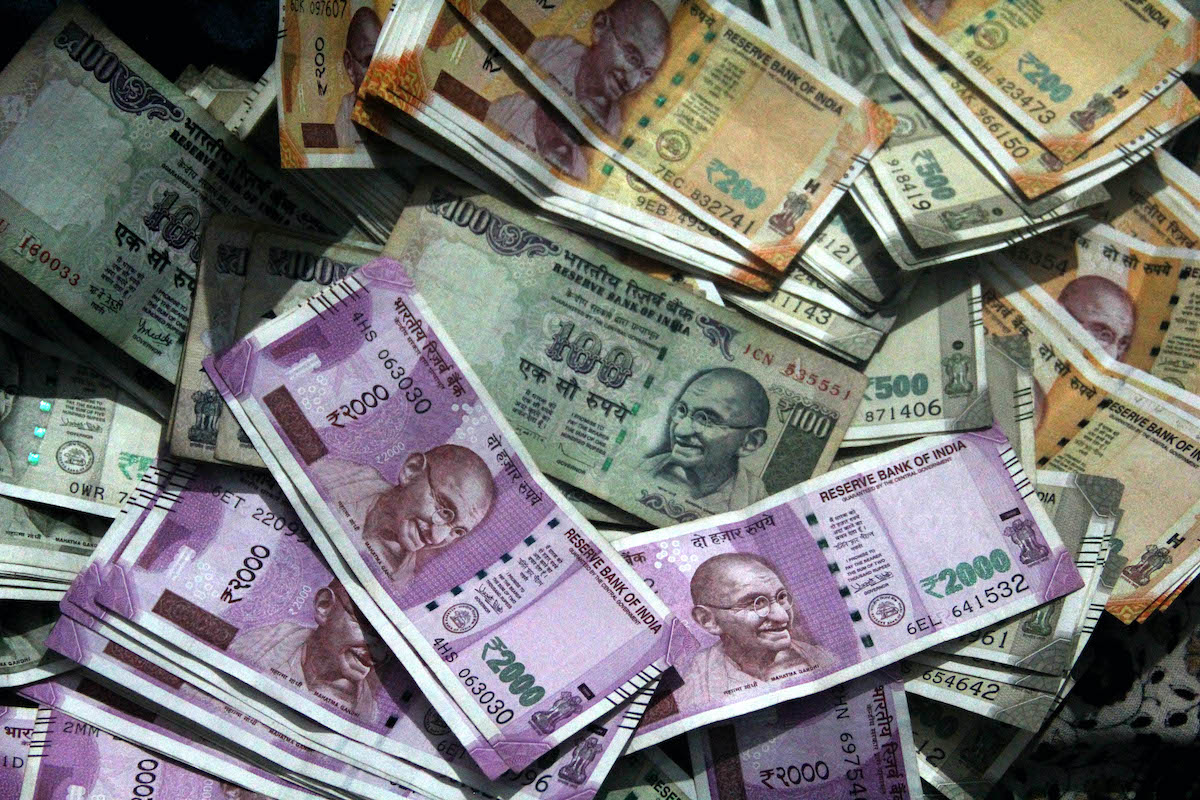The Indian rupee narrowly avoided hitting a record low on Monday, bolstered by likely intervention from the Reserve Bank of India (RBI) as local equities faced significant declines. The currency, which has been under pressure due to global economic uncertainties and domestic market turmoil, found temporary respite, showcasing the central bank’s proactive stance.
The rupee, which was nearing its previous record low of 83.29 per dollar, saw a rebound after reports emerged of the RBI stepping in to stabilize the currency. By the end of the trading session, the rupee had settled at 83.12 per dollar, recovering from an intraday low of 83.25.
Market analysts suggested that the RBI’s intervention involved selling dollars through state-run banks to curb the rupee’s depreciation. This move comes as part of the central bank’s broader strategy to manage volatility and maintain economic stability amidst challenging global conditions.
“The RBI’s timely intervention has provided much-needed support to the rupee,” said Anindya Banerjee, a currency analyst at Kotak Securities. “Given the current global financial environment, such measures are crucial to prevent excessive depreciation and ensure market confidence.”
The intervention came amid a significant slide in Indian equities, with the benchmark Sensex falling by 2.5% and the Nifty 50 index dropping by 2.3%. The decline in local equities was driven by a mix of global economic concerns, including rising interest rates in the US and geopolitical tensions, which have dampened investor sentiment.
“Global risk aversion is impacting emerging markets, including India,” noted Garima Kapoor, an economist at Elara Capital. “The fall in equities has exacerbated the pressure on the rupee, making the RBI’s role in stabilizing the currency even more critical.”
The RBI has been actively monitoring the foreign exchange market, ready to intervene as needed to prevent excessive volatility. This approach aligns with the central bank’s commitment to maintaining a stable macroeconomic environment and protecting the country’s financial interests.
“Maintaining the rupee’s stability is essential, especially in times of global financial turbulence,” said RBI Governor Shaktikanta Das in a recent statement. “Our interventions are aimed at ensuring orderly market conditions and safeguarding the economic interests of the nation.”
The rupee’s performance is also influenced by India’s current account deficit and foreign investment flows. While the RBI’s interventions provide short-term relief, long-term stability will depend on broader economic factors, including trade balances and foreign direct investment.
Economists emphasize the importance of structural reforms and policies to enhance economic resilience. “The RBI’s interventions are necessary but not sufficient on their own,” stated Radhika Rao, an economist at DBS Bank. “India needs to focus on long-term strategies to improve its economic fundamentals and attract sustained foreign investments.”
As the global economic landscape remains uncertain, the RBI’s actions in stabilizing the rupee underscore the central bank’s critical role in navigating these turbulent times. The currency’s near-term trajectory will likely continue to be shaped by both domestic economic policies and international developments.


